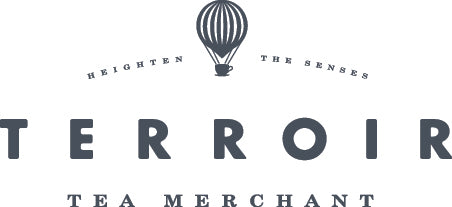The Sensory Scout

Welcome to Two Leaves and a Blog! I’m Charity – founder of Terroir Tea Merchant – and I’ll be writing most of the posts with input from fellow tea professionals. Visit Our story to learn more about us.
The name Two Leaves and a Blog is a play on “two leaves and a bud”, which is the term used to describe the plucking standard for premium teas. I hope this blog will be a way of connecting with new and seasoned tea lovers and sharing what I’ve learned – and continue to learn – on my tea journey, which I call The Tao of Tea or The Path of Tea. Sometimes I’ll write about new teas, growing regions, tea processing, what’s happening in the tea industry, tasting tips, food pairings, teaware, recipes or wherever else the path takes me.
I hope this will add to your enjoyment and enhance your tea knowledge because tea is about more than just how it tastes; it’s a sensory experience of sight, smell, touch, sound and taste. And tips about how to develop your senses seems like a good place to start.
Several years ago at the World Tea Expo in Las Vegas, I registered for Sensory Evaluation of Tea as it was being offered by tea legend Jane Pettigrew. Her co-presenter and protégé was Victoria Bisogno of El Club Del Te, who is the tea expert for the Spanish speaking community.
So what was the premise behind Sensory Evaluation of Tea? Expressing in words what our senses find. And how do we do this? By drawing on our experiences and matching it with what we already know.
Most of the tips in this workshop I learned through tea master training, but it was good to hear a different approach. When assessing the dry leaves, we should look for the leaf grade, quantity of buds, balance of leaf size, shape and style, and colour. We were encouraged to break the leaves to evaluate the sound – crunchy or not crunchy – because if the leaves are not brittle and crunchy there could be too much water in the leaf; too much moisture means the tea won’t hold its quality. And to assess the aroma, we searched for “off notes” or negative descriptors, like stale or damp.
When it came to evaluating the wet leaves, we looked at all the same characteristics as in the dry leaves with one slight variation. Because you get the most aromas out of wet leaves, they broke the aroma analysis into three parts: attack, middle and end. What do you smell right away (attack); what do you smell next (middle); and what is the last impression (end). I found this quite interesting as I always smell things to help train my palate.
They used the same approach when it came to analysing the liquor flavour. I always try to find at least three flavours – or aroma notes in the mouth, as they called them – but I liked classifying the flavours based on when I tasted it. Using their suggestions and Dictionary of Aromatic Descriptors I evaluated three teas: Ceylon OP1, Gunpowder and Puerh. I found the Gunpowder started with ash/smoke, then cooked vegetables, and finished off with dates and pine needles. The Ceylon OP1 was much more palatable with sweet potato, honey and a citrus finish, and the Puerh delivered with its signature leather, wet soil and stewed fruits.
So if we draw on our experiences and express in words what our senses find by matching it with what we already know, it’s important to take in all the sights, sounds, aromas and flavours no matter where we are or what we’re doing, and file these in our sensory memory bank. And for a complete sensory experience, we withdraw from our memory bank and listen to the words of Zen teacher Thich Nhat Hanh:
Drink your tea slowly and reverently, as if it is the axis on which the world earth revolves - slowly, evenly, without rushing toward the future.”

Leave a comment